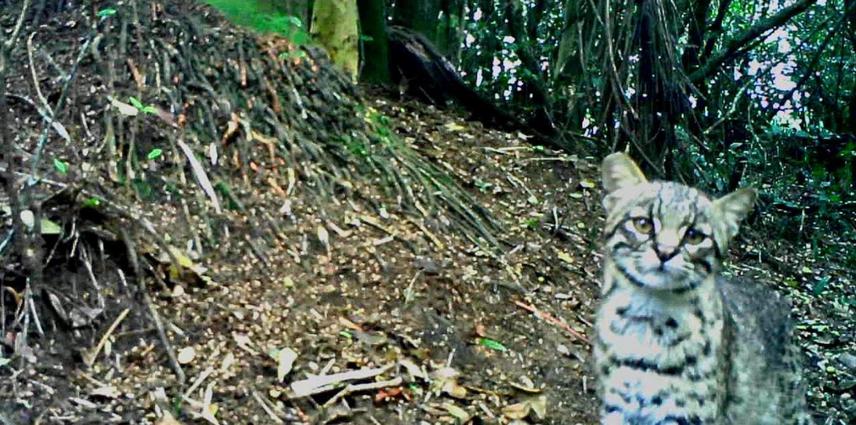Social media videos featuring the project.
Other videos: Você conhece o bioma Pampa?, Conheça a Fauna do Pampa, Conheça o projeto de mestrado do Jordani Dutra!, Conheça o mão pelada! Fieldwork September 2021
23 Oct 2020 Uruguayan Savannah, Uruguay, Central and Latin America Carnivores | Farming | Mammals
In this study we intend to assess the potential effects of human disturbance on the terrestrial carnivorans of the Uruguayan savannah ecoregion. We aim to estimate occupancy and activity patterns of carnivorans (Mammalia: Carnivora) in different areas of Uruguayan savannah to understand how land use and invasive species affect these species. The results of this bi-national study will support management actions, including some objectives of Brazilian National Conservation Action Plan on small wildcats. In addition, they will help in the recommendations to local farmers from the different countries.

The Uruguayan savannah is a sub-tropical grassland ecoregion which comprises part of Brazil and Argentina, and the entire Uruguay. This ecoregion includes 15 native carnivoran species. In the past 500 years, the region has been highly exploited by human activities such as cattle ranching, agriculture, and forest plantations. These activities have both led to extensive alteration of the original landscape and also many local extinctions. Consequently, the ecoregion is considered one of the highest conservation priorities in the Neotropics, currently categorized as ‘Critical/Endangered’. Invasive species, as boars and cheetals, were also introduced in the ecoregion, and the impacts of these in the wildlife are unknown. This could be especially problematic considering that there are endemic and threatened species in the ecoregion, as the Uruguayan Pampas cat/ Muñoa’s pampas cat (Leopardus munoai).
Therefore, we intend to estimate how land use and invasive species affect spatial and temporal patterns of the different native species of carnivorans (Mammalia: Carnivora).
By using camera trapping, a non-invasive method of collecting data, we will sample at least 108 sites in the ecoregion, and we will estimate occupancy and temporal analysis for each species. Based on the results of this project, we will generate and submit a formal document containing recommendations for the conservation of carnivorans to governmental environment organizations and to local farmers of Brazil and Uruguay. Additionally, we will create a simplified documentary series about carnivorans of Uruguayan savannah and their importance and conservation, using images recorded in our study. We intent to use these videos in citizen science projects with local communities and to share them in social media (YouTube, Facebook, Instagram, etc).
The results of this bi-national study will support management actions, including some objectives of Brazilian National Conservation Action Plan on small wildcats. In addition, they will help in the recommendations to local farmers from the different countries.
Social media videos featuring the project.
Other videos: Você conhece o bioma Pampa?, Conheça a Fauna do Pampa, Conheça o projeto de mestrado do Jordani Dutra!, Conheça o mão pelada! Fieldwork September 2021